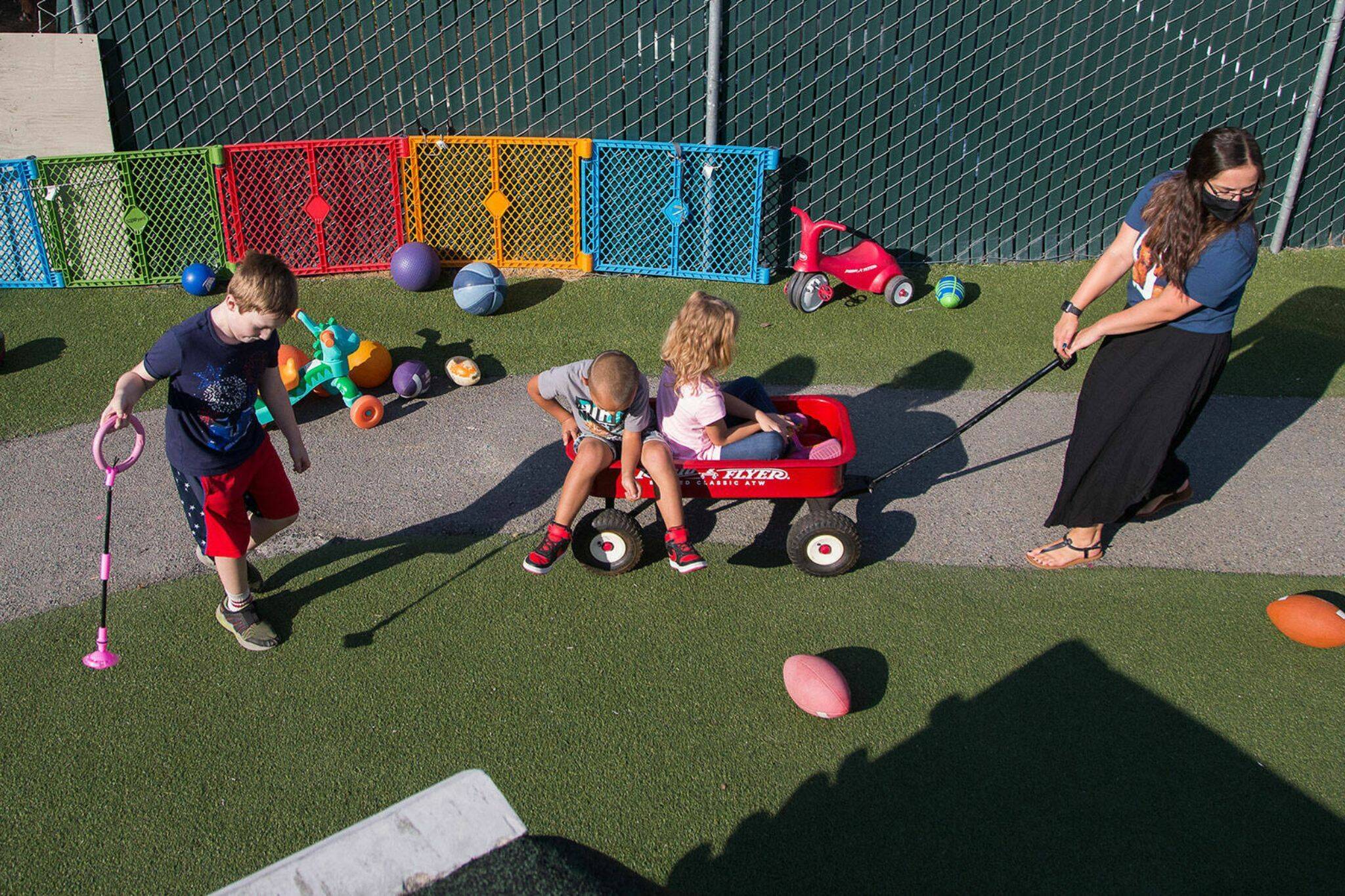LYNNWOOD — The Early Learning Leadership Council of Snohomish County presented on Thursday the preliminary findings of its community survey.
Since the council formed in January, it has been working to gather community input on the reasons behind the county’s child care crisis and find solutions to move forward.
As of February, the state considered 19 of 29 zip codes in Snohomish County “extreme childcare access deserts.” Only about 23% of Snohomish County families who make less than 60% of the state median income are getting the child care they need, according to state data.
“Especially in a county as large and diverse as Snohomish, it is imperative that we seek answers to the questions that remain of why there are gaps that we are seeing, why there is such a shortage of childcare accessibility and how we can tangibly help families really make those connections so that they can be successful in their careers,” said Jennifer Pelissero, co-chair of the Early Learning Leadership Council.
The council consists of 19 members, including early learning leaders, parents, business representatives, superintendents and mental health professionals.
About 450 parents and 70 providers throughout Snohomish County responded to the survey. The group collected data through the survey, focus groups and interviews.
While the council collected a lot of quantitative data, it wanted to highlight stories people told. The council decided to title the report “Bringing Our Stories Forward: What We Heard about Childcare in Snohomish.”
“We see a lot of numbers, we see a lot of graphs, but when we hear directly from you and your stories, that’s really what makes a big difference,” said State Rep. Julio Cortes, D-Everett, who spoke Thursday.
Meena Das, a research consultant from Namaste Data, presented the results to a full house Thursday evening, including quotes from respondents.
“I had to quit my job because even with subsidies, I couldn’t afford childcare and rent at the same time,” one parent wrote.
“The hardest part was just figuring out where to even start,” another wrote. “The websites are confusing, and nothing’s in Spanish.”
Of the parents, 44% said long waitlists for child care programs was one of the biggest challenges they face in finding or using child care. Other challenges with a high response rate included not qualifying for financial assistance, hours that don’t match parents’ work schedules and not having enough options near them.
The council split up the data by a number of demographic factors, including rural residences, immigrant families, families of children with disabilities and BIPOC families.
Of the rural residences, nearly 20% said there weren’t enough child care options near them. A high number of immigrant families said there are limited options for bilingual and dual-language children. A large portion of families with children with disabilities said there’s a lack of child care providers who accept children with disabilities or special needs.
Among providers, 54% said one of the biggest challenges they face is that the cost is too high for families. Other challenges included competing with free preschool or transitional kindergarten and a lack of awareness among parents.
“There’s a big difference in subsidy rates just across the county line,” one provider wrote. “Same child, same work — but I get paid $400 less.”
“Behavioral challenges have skyrocketed,” another wrote. “My teachers are burning out, crying in the middle of the day. We need support, not just binders.”
Some speakers highlighted work on the state and local levels to help address the child care crisis.
State Rep. Carolyn Eslick, R-Sultan, spoke about her work in passing House Bill 1648, which extends the timeline for child care providers to meet qualification requirements.
In March, the Snohomish County Council passed an ordinance to change zoning laws and speed up the permitting process for child care centers in unincorporated parts of the county.
From the leadership council’s preliminary data, the group made a number of recommendations and action steps as it moves forward in its work, including expanding access in underserved areas, investing in multilingual parent education and family resources, and building stronger connections between families and providers.
The council will complete its full report by the end of June, which will include more data points and recommendations, Pelissero said.
Jenna Peterson: 425-339-3486; jenna.peterson@heraldnet.com; X: @jennarpetersonn.
Talk to us
> Give us your news tips.
> Send us a letter to the editor.
> More Herald contact information.

























